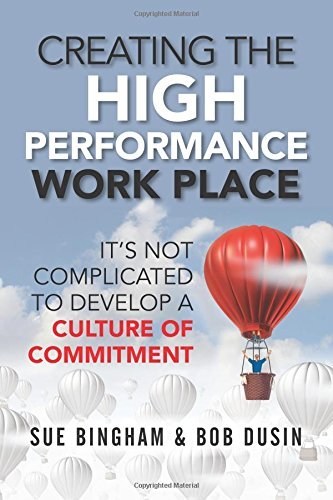Are you a business leader looking for a competitive edge? Would you like to create a high-performance workplace, which encourages committed employees to innovate and contribute to your organization? Sue Bingham and Bob Dusin, authors of the book “Creating the High Performance Workplace; It’s Not Complicated to Develop a Culture of Commitment” (2018, Indie Books International), offer useful and practical tips.
Sue Bingham is a founder of HPWP Group, which has been at the forefront of the positive business movement for 35 years. She has personally conducted hundreds of leadership workshops transforming the lives of over 3,000 leaders. Bob Dusin is a partner and workshop facilitator at HPWP, where he advocates a common-sense approach to leadership.
Here are the authors’ eight elements of a high-performance workplace, where people love to come to work:
- Positive assumptions: Eliminate the blame game and assume that people want to make good decisions.
- Identify and eliminate negatives: Discard subtle status differences, which cause one group to feel less important and less valued than others.
- Mutual trust and respect: Hire only trustworthy people to work in your organization and represent your brand.
- Open, two-way, adult communication: Interact with colleagues as adults rather than children.
- Employee involvement and engagement: Don’t just ask for input to give the illusion of engagement. Don’t let people get involved – expect that they want to get involved. Encourage colleagues to improve and innovate. Otherwise, you’re paying for an expensive system and using only a small part of its capabilities.
- Training: Training is an indispensable investment in your culture and should have a quantifiable ROI for performance improvement. What does stellar training look like? People are on a wait-list to attend your training.
- Competitive wages and benefits: Research confirms that people don’t quit for money; they leave when they feel unfairly treated. Make wages and benefits competitive, and be open about the structure and data. People usually don’t leave for more money if they feel they are being treated fairly.
- High expectations: If your job profiles end with “other duties as assigned” and you regularly tell people “do the best you can,” you’ve just set a low bar for performance. Set expectations in terms of maximums, and then reward progress.

